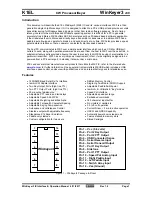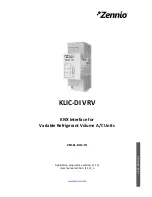
10-2
Planning the control cabinet
ECODRIVE DKC02.1 Drive Controller
DOK-ECODRV-DKC02.1****-PRJ2-EN-P
10.2 Using heat-exchange units in the control cabinets
Improperly installed and operated heat-exchange units are a risk to the
drive components installed in the control cabinet due to the condensation
and condensed water which these may cause!
Humid air enters the cabinet and, as it cools, condenses onto the installed
drive components.
If the heat-exchange unit is not properly installed in the control cabinet,
accumulating condensing water can drip into the installed drive compo-
nents or be sprayed into them by the cold air current.
Proper use of the heat-exchange units:
•
When using heat heat-exchange units, the cabinets must be well
sealed so that moisture cannot form caused by humid outside air en-
tering the cabinets!
•
In the event that the control cabinets are operated with open doors
(startup operation, servicing, etc.), ensure that the drive components
are never cooler than the air in the control cabinets after the doors
have been closed. Otherwise, condensation may occur. For this rea-
son, it is important that the heat-exchange unit continues to operate
when the system has been shut down to ensure that temperature
within the control cabinet does not deviate from that of the drive com-
ponents.
•
Set the heat-exchange unit to a permanent temperature of 40 °C. Not
lower!
•
Heat-exchangers with follow-up temperature must be set so that the
temperature inside the cabinet is never lower than the outside tem-
perature. Set the temperature limit to 40 °C!
The heat-exchange units must be arranged in such a way that condensed
water that may accumulate cannot drip into the installed drive compo-
nents. Units on top of the cabinet require a special design!
Make sure that the control cabinet is constructed in such a way that the
blower of the cooling unit cannot spray condensed water which may have
collected, onto the drive components!
•
Ensure that no condensed water can drip into the installed drive com-
ponents!
•
Make sure that the temperature of the heat-exchange unit has been
properly set!
Risk of condensation
Risk of condensation
Avoiding condensation
Avoiding dripping and sprayed
water
Summary
LSA Control S.L. www.lsa-control.com [email protected] (+34) 960 62 43 01
















































